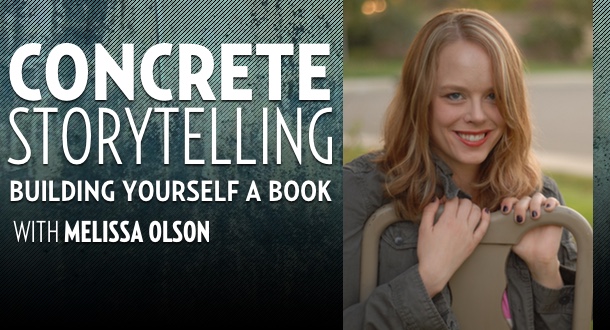
Writing a novel can be overwhelming. After all, that's a lot of words—all in a row, and they even have to make sense! Learn how to build the foundation for a book in this four-week workshop.
Your Instructor: Melissa Olson, author of BOUNDARY CROSSED, THE BIG KEEP, and the Scarlett Bernard series
Where: Online — Available everywhere!
When: This class is not currently enrolling. To be notified when it is offered again, Click Here
Enrollment: 16 students
Price: $325
Class Description
Writing a novel can be overwhelming.
It can be especially tough for a new writer, or someone trying to fit writing into a busy lifestyle.
It’s easy to get bogged down in outlining, or stuck in the middle of “pantsing” your way through the second act.
To avoid these pitfalls, it helps to view writing the same way you’d look at building a wall out of concrete: a step-by-step process that leaves you with a strong, well-structured product. Something that will stand up to the weight of your themes, that won't crumble upon closer inspection—but most of all, something you can be proud of.
In this four-week class, Melissa F. Olson, author of The Big Keep and the Scarlett Bernard series, will walk you through the steps for building a real concrete wall (seriously, her father owns a pre-cast concrete plant in Northern Wisconsin, where she worked during the summers when she was a teenager). And she'll show you how perfectly it translates into the writing process.
Different people learn differently, and even if you’ve gotten stuck before, this fresh approach to the writing process can help spark the creativity you’ve always wanted to unleash. This is a great class for beginners, or for people who are hoping to step up their book game. The class will include lectures, assignments to be critiqued by Melissa and your peers, and plenty of opportunities to ask quesitons along the way.
And you'll leave the class both with a clearer sense of how to start a book, as well as critiques on your writing from a published author.
Sign up, and let's pour some story foundation!
What This Class Covers
Week 1: Build Your Form
The first step to making a concrete wall is to put together a form—a metal frame that defines the edges. In turn, the first step of any writing project is figuring out the shape of it: Will this be a novel, novella, or maybe a novel in short stories? What genre and subgenre(s) will it belong to? Who is the audience, and what will they be looking for? Of course, working outside established conventions can be wonderful, but you have to understand what they are in order to defy them. This week we’ll brainstorm out the shape of your project and begin working on characters and major plot twists.
Assignment: Go through the Shaping Your Story worksheet, plus suggested reading.
Week 2: Give it Structure
You can’t function without a spine. Even a substance as strong as concrete will crumble without a steel foundation helping it hold its shape. In order to write a novel, you need to know the rough “beats” of the story, the framework that the whole thing will eventually hang on. This week we’ll start by looking at different ways to diagram and define story structure, then move on to commonly-used writing tools such as the Hero’s Journey and the “snowflake” method.
Assignment: Write an outline and/or a short summary of your story, plus suggested reading.
Week 3: Pour in Some Story
Now it’s time for the actual drafting. For some writers, this can be as smooth and simple as pouring concrete, but others get caught up on something as small as knowing where to end the chapter or something as complex as writing character dialogue. This week we’ll look at what makes a strong opening, then focus on tips, tricks, and methods for keeping those words flowing.
Assignment: Write the first 2,000 words for peer and instructor critique.
Week 4: Get Rid of the Flaws
After concrete is poured it goes through several small processes to remove rough spots, air bubbles, and unevenness. It’s time to do the same thing to your story: check for problems and smooth the surface. This week we’ll talk about how to edit your own work, plus how and when to hire a professional. Development editing, beta-reading, line-edits, and proofreading are all part of making sure your completed work doesn’t have any small inherent flaws that will damage its quality.
Assignment: Turn in the next 2,000 words of your book for instructor and student critique plus instructor guidance on how to continue in a dynamic and compelling fashion.
Goals Of This Class
- Develop an understanding of your project’s genre, expectations, and audience motivations.
- Understand the process of writing a novel from initial idea to final manuscript.
- Learn the importance of (and techniques behind) story beats, strong structure, and plotting.
- Explore a variety of drafting and plotting methods to find out which ones work for you.
- Avoid common pitfalls that might stall your process.
- Develop an outline and initial chapters that will lead you straight to a strong, finished novel.

